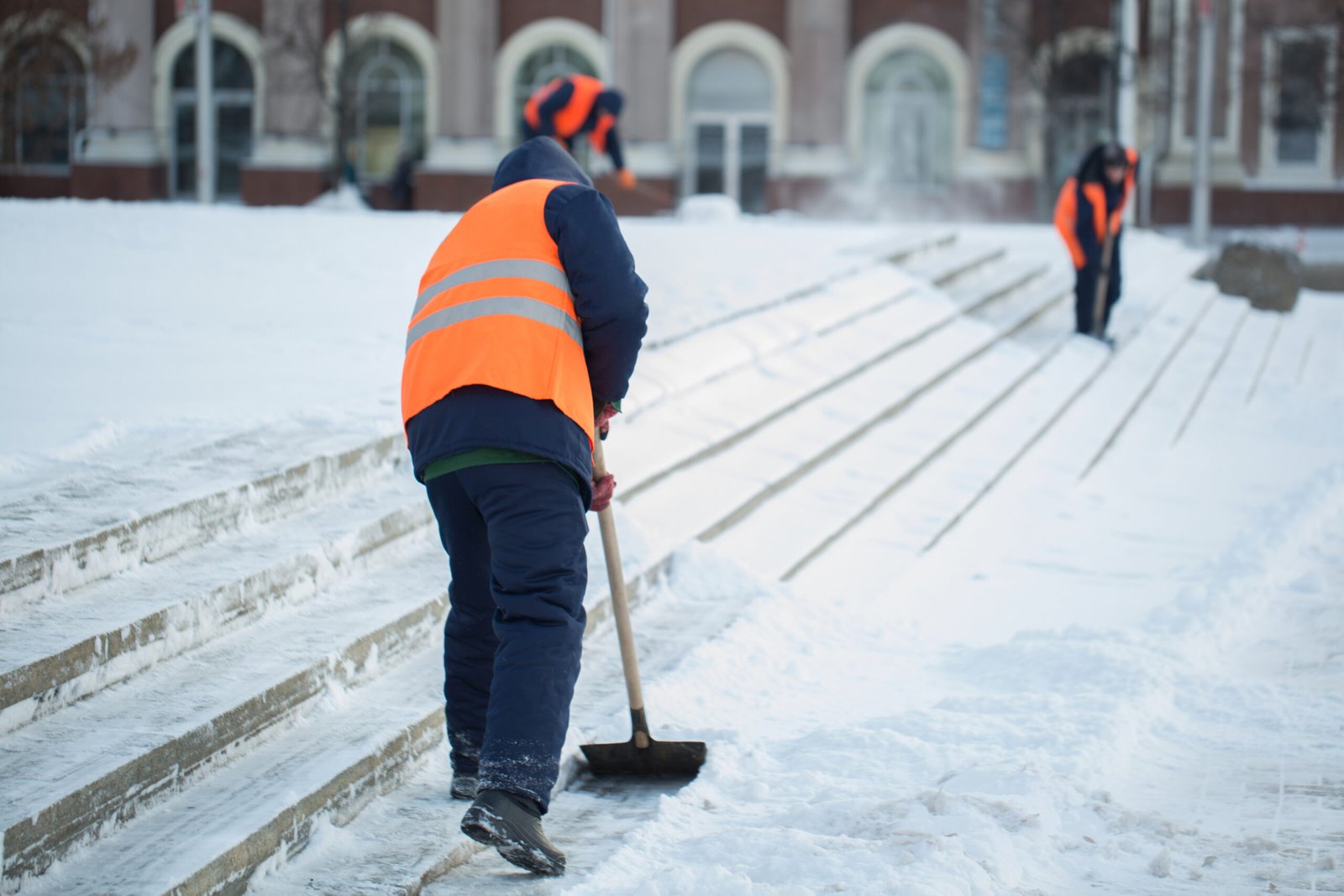Winter weather brings a unique set of challenges for homeowners, especially when it comes to preserving landscapes under a blanket of snow. A proactive and well-planned snow removal strategy can prevent damage to both plant life and hardscaping features, saving time, effort, and money in the long run. At its core, efficient snow removal is not just about clearing paths and driveways but protecting your carefully designed landscape from the harsh effects of ice, heavy snow, and freezing temperatures. This guide outlines practical steps and tips for keeping your outdoor space pristine during winter.
Why Protecting Your Landscape in Winter Matters
Landscapes are investments that require diligent care year-round. In winter, the weight and moisture of accumulated snow can cause significant damage, particularly to vulnerable shrubs, flower beds, and trees. Improper snow removal can lead to compacted soil, suffocated roots, and physical damage to both plants and hardscaping features. By taking intentional steps toward efficient snow removal, you can avoid the costly repairs and replacements that often come with snow and ice damage, ensuring your yard remains healthy and ready to bloom come spring.
Choosing the Right Snow Removal Techniques for Residential Properties
Effective residential snow removal requires a combination of methods tailored to different parts of your property. Let’s dive into the methods and tools that protect landscaping while ensuring safety and accessibility.
1. Shoveling and Blowing Techniques to Minimize Plant Damage
When using shovels or snow blowers, avoid directly targeting areas close to plants and garden beds, as forceful contact can lead to breakage. Opt for small shovels when working near sensitive plants, using a sweeping motion to gently push snow away. Snow blowers, although efficient, should be used cautiously around beds and shrubs, directing snow away from fragile areas to prevent snow piling, which can stress plant roots and break branches.
For larger areas, consider investing in a snow blower with variable speed settings and adjustable chute controls. This allows for better control over where snow is deposited, significantly reducing the risk of harming landscape features. Blowing snow away from plants and creating clear paths in high-traffic areas can help maintain both accessibility and the integrity of the landscape.
2. De-Icing Agents: Choosing Safe Options for Your Yard
Not all de-icing agents are safe for plant life and hardscaping materials. Common rock salt can be harmful to grass, shrubs, and trees, as its chemical properties can leach into the soil, causing desiccation and potentially stunting growth. For a safer alternative, use calcium magnesium acetate (CMA) or potassium chloride-based de-icers. These are less harmful to both the environment and your landscape while effectively melting ice.
Applying these agents sparingly and strategically is key. Limit use near flower beds and tree bases, and always follow the manufacturer’s guidelines to avoid excess runoff into your garden. By choosing gentler de-icing products, you’ll reduce the risk of chemical burns on plants and keep soil conditions optimal for root health.
3. Protecting Trees and Shrubs from Heavy Snowfall
Trees and shrubs, especially evergreens, can suffer broken branches under the weight of heavy snow. Protect them by gently brushing off excess snow using a soft broom or gloved hands. Avoid shaking the branches, as this can cause them to snap. For added protection, wrap vulnerable shrubs and smaller trees in burlap before the first snowfall. Burlap coverings help shield plants from wind, salt, and ice while offering added support to branches under snow accumulation.
In cases of heavy or prolonged snowfall, consider propping up larger branches with stakes to prevent sagging and breaking. Monitoring snow buildup and promptly removing it from sensitive trees and shrubs can make a significant difference in maintaining their shape and health throughout the season.
4. Managing Snow Piles and Drainage Paths
Snow piles are inevitable during winter, but their placement is crucial to protecting your landscape. Avoid piling snow on or near garden beds, as this can suffocate plants and compact soil, making it harder for roots to breathe. Instead, designate an area at the edge of the property, away from delicate plantings, to collect excess snow.
Creating proper drainage paths is equally important. As snow melts, ensure water is directed away from landscaped areas, preventing standing water and potential root rot. A well-planned drainage strategy will prevent waterlogging and allow for a smoother transition from winter to spring, protecting both your lawn and garden beds.
5. Professional Snow Removal Services: When to Call in the Experts
Sometimes, heavy snowfall or ice storms may call for professional snow removal services. Professionals use specialized equipment and techniques that minimize the risk of landscape damage. If you have a particularly large or complex property, or if winter storms are frequent in your area, hiring experts can save time and prevent potential harm to your plants and structures.
Professional services often include customized snow removal plans tailored to your property’s layout and plant types, ensuring your landscape receives the best care possible. This can be a valuable investment, particularly if your property includes mature trees or elaborate hardscaping that would be costly to repair.
Preserving Hardscaping During Winter
Hardscaping features like patios, pathways, and driveways are integral parts of many landscapes and require special care to withstand winter weather. Excessive moisture and freezing temperatures can lead to cracks and erosion, diminishing the longevity of these surfaces. Here are some ways to protect hardscaping elements during the winter months.
1. Protecting Driveways and Walkways from Ice Damage
Concrete, pavers, and asphalt are all vulnerable to cracking when water freezes and expands within their structures. Using a polymer-based sealer before winter arrives can help keep moisture out, preserving the integrity of these surfaces. When de-icing, avoid metal shovels that can scratch and damage surfaces, and opt for plastic or rubber-edged tools instead.
In addition to sealing, using gravel or sand on walkways can provide traction without the harmful effects of salt-based de-icers. Gravel is a natural and eco-friendly option that reduces slip hazards and can be swept away easily once winter ends.
2. Preventing Freeze-Thaw Damage
The freeze-thaw cycle, which occurs as temperatures fluctuate, can wreak havoc on hardscaping by expanding cracks and creating uneven surfaces. To reduce freeze-thaw damage, maintain good drainage around hardscaping. Sloping driveways and pathways slightly away from the property can help direct melting snow away from these areas, minimizing standing water and reducing the risk of cracking.
Installing permeable pavers in high-traffic areas can also alleviate freeze-thaw pressure. These pavers allow water to drain through, reducing the risk of ice accumulation and lessening the impact of temperature shifts on your hardscaping.
Winter Plant Care: Maintaining a Healthy Landscape
Winter care doesn’t end with snow removal. By focusing on plant health and preventative maintenance, you’ll ensure that your landscape remains resilient and ready for spring.
- Mulching Garden Beds to Insulate Roots – Adding a fresh layer of mulch around garden beds in late autumn can help insulate roots from extreme cold. Organic mulch, such as wood chips or shredded leaves, provides a protective layer that regulates soil temperature and minimizes moisture loss. A two to three-inch layer is generally sufficient to shield roots while preventing soil compaction.
When placing mulch, keep it slightly away from the bases of plants and trees, as direct contact can lead to rot. Mulch should be spread evenly, avoiding mounds that can suffocate roots. Proper mulching will keep your plants healthy and improve soil quality in the spring. - Pruning and Shaping for Stronger Growth – Pruning certain plants in late winter can promote healthy growth and reduce the risk of snow damage. Remove dead or weak branches from shrubs and trees, as these are more likely to break under snow weight. Proper pruning helps plants conserve energy during dormancy and encourages robust growth once temperatures rise.
Avoid heavy pruning right before winter, as this can stimulate new growth that may not survive cold temperatures. Light, strategic trimming will provide plants with the structure they need to withstand winter conditions and flourish when spring returns.
Conclusion
In conclusion, effective winter snow removal is essential for protecting your landscape and ensuring it thrives year-round. By carefully choosing methods that protect plants, shrubs, and hardscaping features, you can avoid costly repairs and enjoy a pristine outdoor space once the snow melts. For those looking for expert guidance and high-quality snow removal services, trust Empyre Outdoor Living to safeguard your landscape this winter.
Call us now at 719-377-6565 to discuss your needs and let us help you maintain a beautiful, resilient outdoor space all season long.
Frequently Asked Questions
Snow removal is crucial because heavy snow and ice can damage plants, trees, and hardscaping features like pathways and patios. Snow can break branches, compact soil, and even cause root suffocation if it accumulates in garden beds. Removing snow properly prevents costly damage to your landscape, ensuring your outdoor space stays healthy and ready to bloom in the spring.
The safest snow removal methods involve using plastic or rubber-edged tools, as metal tools can damage plant roots and hardscaping surfaces. For areas near delicate plants, it’s best to use small shovels or even your hands to gently brush snow off branches and shrubs. Snow blowers should be used carefully to direct snow away from garden beds to avoid piling that can harm plants.
Yes, there are eco-friendly de-icers that are less harmful to your plants and soil. Common rock salt can damage plant roots and soil health, so alternatives like calcium magnesium acetate (CMA) or potassium chloride-based de-icers are recommended. These options provide effective ice control while minimizing negative impacts on your landscape and surrounding environment.
To protect trees and shrubs, you can use burlap wraps around vulnerable plants to shield them from heavy snow, wind, and salt. Gently brush off heavy snow with a soft broom or your hands rather than shaking the branches, which can cause breakage. If necessary, you can also stake larger branches for additional support during particularly heavy snowfall.
Hiring a professional snow removal service is beneficial when you have a large property, mature trees, or complex landscaping. Professionals use specialized equipment that prevents landscape damage and can manage heavy snow efficiently. Additionally, they often tailor their approach based on your property’s unique needs, saving you time and protecting your investment throughout the winter.










